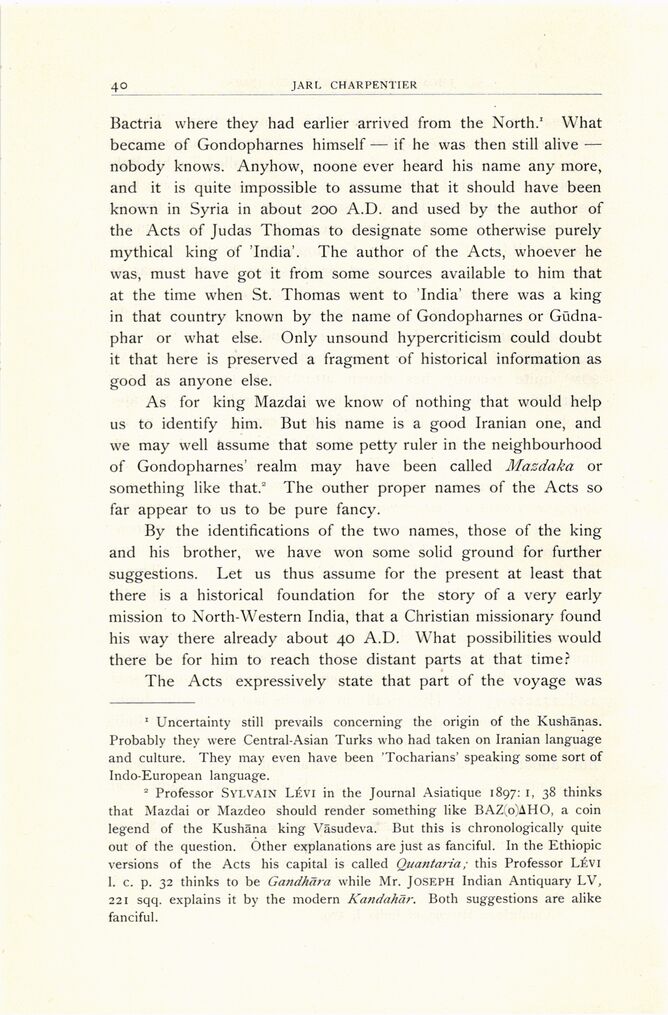
Full resolution (JPEG) - On this page / på denna sida - I. Undersökningar - Jarl Charpentier, St. Thomas the Apostle and India

<< prev. page << föreg. sida << >> nästa sida >> next page >>
Below is the raw OCR text
from the above scanned image.
Do you see an error? Proofread the page now!
Här nedan syns maskintolkade texten från faksimilbilden ovan.
Ser du något fel? Korrekturläs sidan nu!
This page has never been proofread. / Denna sida har aldrig korrekturlästs.
3 2
JARL CHARPENTIER
Bactria where they had earlier arrived from the North." What
became of Gondopharnes himself — if he was then still alive —
nobody knows. Anyhow, noone ever heard his name any more,
and it is quite impossible to assume that it should have been
known in Syria in about 200 A.D. and used by the author of
the Acts of Judas Thomas to designate some otherwise purely
mythical king of ’India’. The author of the Acts, whoever he
was, must have got it from some sources available to him that
at the time when St. Thomas went to India’ there was a king
in that country known by the name of Gondopharnes or
Güdna-phar or what else. Only unsound hypercriticism could doubt
it that here is preserved a fragment of historical information as
good as anyone else.
As for king Mazdai we know of nothing that would help
us to identify him. But his name is a good Iranian one, and
we may well assume that some petty ruler in the neighbourhood
of Gondopharnes’ realm may have been called Mazdaka or
something like that.2 The outher proper names of the Acts so
far appear to us to be pure fancy.
By the identifications of the two names, those of the king
and his brother, we have won some solid ground for further
suggestions. Let us thus assume for the present at least that
there is a historical foundation for the story of a very early
mission to North-Western India, that a Christian missionary found
his way there already about 40 A.D. What possibilities would
there be for him to reach those distant parts at that time?
The Acts expressively state that part of the voyage was
1 Uncertainty still prevails concerning the origin of the Kushänas.
Probably they were Central-Asian Turks who had taken on Iranian language
and culture. They may even have been ’Tocharians’ speaking some sort of
Indo-European language.
2 Professor svlvain lévi in the Journal Asiatique 1897: i, 38 thinks
that Mazdai or Mazdeo should render something like BAZ(o)AHO, a coin
legend of the Kushäna king Vasudeva. But this is chronologically quite
out of the question. Other explanations are just as fanciful. In the Ethiopic
versions of the Acts his capital is called Quantaria; this Professor LÉVI
1. c. p. 32 thinks to be Gandhàra while Mr. joseph Indian Antiquary LV,
221 sqq. explains it by the modern Kandahar. Both suggestions are alike
fanciful.
<< prev. page << föreg. sida << >> nästa sida >> next page >>